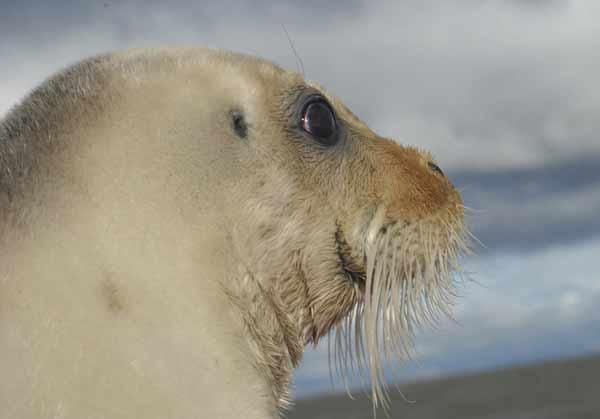
Six Seal Species May Be Headed to Endangered List

The threat of diminishing sea ice and loss of snow cover has motivated the National Oceanic and Atmospheric Administration to propose listing four subspecies of ringed seals, found in the Arctic Basin and the North Atlantic, and two distinct population segments of bearded seals in the Pacific Ocean, as threatened under the Endangered Species Act.
Out of the five recognized subspecies of ringed seals, one, the Saimaa in Finland, is already listed as endangered under the ESA . Under the proposed rules published today in the Federal Register, the remaining four subspecies of ringed seals Arctic, Okhotsk, Baltic and Ladoga would be listed as threatened.
Ringed seals are found in the Arctic Basin (including the Bering Sea), the western North Pacific (Sea of Okhotsk and Sea of Japan), in the North Atlantic in the Baltic Sea and in Lakes Ladoga and Saimaa, both east of the Baltic Sea.
Throughout most of its range, the Arctic ringed seal uses sea ice for whelping, nursing, molting, and resting. Ringed seal pups are normally born in snow caves in the spring, and are vulnerable to freezing and predation without them. The timing of the spring ice break-up , snow depths on sea ice, and late-winter rain can adversely affect snow cave formation and occupation. Because the species produces only a single pup each year, environmental challenges such as the diminishing ice and snow cover could have a visible effect on their population.
The bearded seal has two subspecies, one in the Pacific Ocean and the other in the Atlantic Ocean. Within the Pacific subspecies, there are two distinct population segments: one found in the Sea of Okhotsk and the other found in the Bering, east Siberian, Chukchi and Beaufort Seas. NOAA's Fisheries Service is proposing to list both Pacific populations of bearded seal as threatened.
Both Pacific bearded seal populations are closely associated with sea ice, particularly during the reproduction and molting stages. They primarily feed on shallow-water organisms, making their range generally areas where seasonal sea ice occurs over relatively shallow waters. Forecasts predict that this ice will be substantially reduced within this century, and there is potential for the spring and summer ice edge to retreat to deep waters of the Arctic Ocean basin.
Because of these factors, the Fisheries Service has found that the four sub-species of ringed seal and the two populations of Pacific bearded seals are at risk of becoming endangered species within the foreseeable future, warranting a threatened listing.
Sign up for the Live Science daily newsletter now
Get the world’s most fascinating discoveries delivered straight to your inbox.
The Fisheries Service is seeking comments from the public on the proposed listing of ringed and bearded ice seals for 60 days from date of publication in the Federal Register, which should occur in the middle of this week. The proposed rules, maps, status review reports and other materials relating to this proposal can be found on the Alaska Region website at: http://alaskafisheries.noaa.gov.











